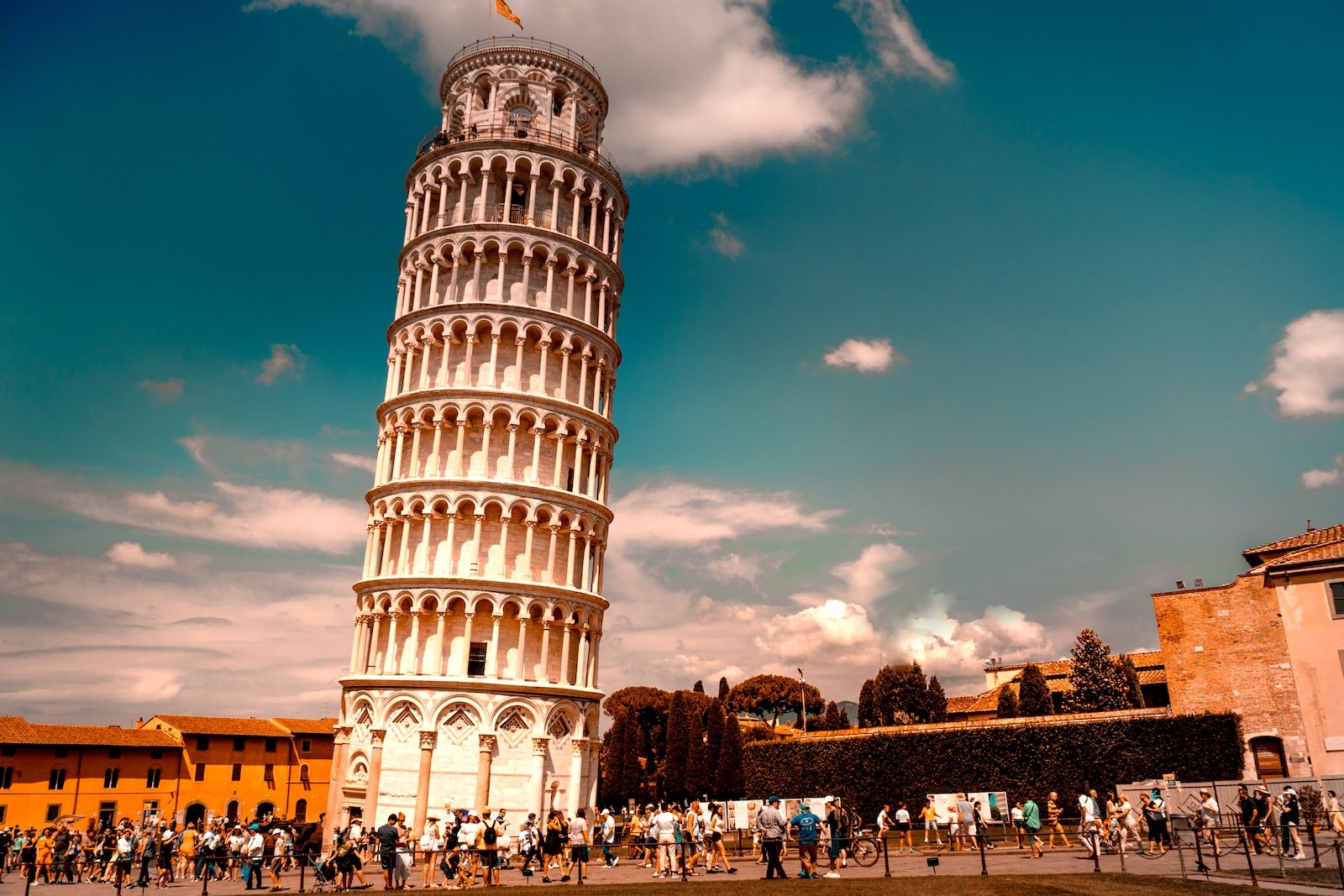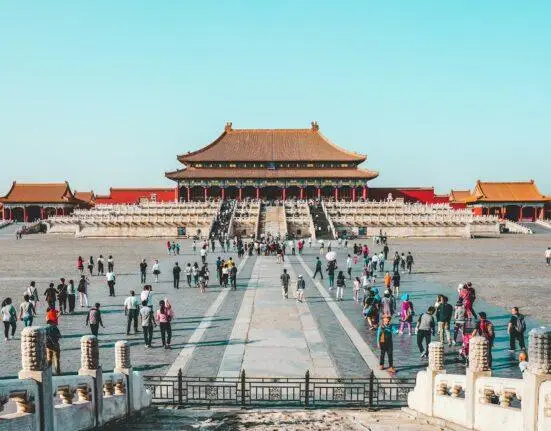Summary. This article provides a brief overview of the historical city of Pisa, located in Italy. It explains the city’s most famous landmark, the Leaning Tower of Pisa, as well as other attractions such as the Cathedral of Pisa, the Camposanto Monumentale and the Square of Miracles. It also explains the city’s cultural history, describing its art and architecture, and details some of the best places to visit and the best time to visit. Finally, the article provides some tips for travelers, such as where to stay and which restaurants to visit.
You’ve come to the right place! Here, we will take a look at the fascinating history and culture of this Italian city, as well as why it’s so famous for its iconic leaning tower. So grab a cup of cappuccino and get ready to find out what To Know About Pisa.
Pisa is more than just a historical and academic destination. The city is also a hub of arts and culture, with a bustling art scene and a variety of events and festivals throughout the year. From the traditional “Gioco del Ponte,” where locals compete to cross the city’s Ponte di Mezzo on a rope, to the internationally renowned “Festival della Scienza,” Pisa is a city that celebrates both its past and its present.
When it comes to food, Pisa does not disappoint. The city is known for its delicious Tuscan cuisine, which includes dishes such as “ribollita,” a hearty vegetable soup, and “bistecca alla fiorentina,” a mouthwatering Florentine steak. Pisa is also home to a variety of world-class restaurants and cafes, where you can sample traditional Italian fare as well as international cuisine.
But the beauty of Pisa extends beyond its city limits. The surrounding region of Tuscany is home to stunning natural landscapes, including rolling hills, vineyards, and olive groves. It’s the perfect destination for those who love the outdoors, with a variety of activities such as hiking, biking, and wine tasting.
In short, Pisa is a city with something for everyone. Its rich history, vibrant culture, and stunning natural surroundings make it a must-visit destination for anyone traveling to Italy.
- Where is Pisa?
- How to get into Pisa?
- What To Know About Pisa And Why You Should Visit Pisa?
- Best things to do in Pisa
- What is the best month to travel to Pisa?
- Getting around Pisa
- How long should I stay in Pisa?
- What to eat in Pisa?
- Where to stay in Pisa?
- Is Pisa safe for female travelers?
- Is Pisa expensive to visit?
- FAQs
- Bottom Line
Where is Pisa?
Pisa is a city in the Tuscany region of Italy, which is on the coast to the west of the country. It is close to the coast of the Ligurian Sea and is found in the Arno valley on the banks of the Arno river. It is easy to reach other important cities in the area, such as Siena, Lucca, and San Gimignano, from Pisa because of its convenient location approximately in the middle of the distance between Florence and Livorno.
However, Pisa is not merely a transit stop on the way to other destinations; rather, it is a destination in its own right. The city is famous for its iconic leaning tower, the Torre Pendente, and is home to a history and culture that are both rich. The tower, which was constructed in the 12th century and is one of the four buildings that make up the Piazza dei Miracoli (also known as the Square of Miracles), is an engineering marvel and has become one of the most recognizable landmarks in the world.
In addition to the Tower of Pisa, the city of Pisa is home to a wide range of other historical and cultural landmarks and attractions. It is a wonderful place to take a leisurely stroll and take in the local atmosphere because the historic center of the city is brimming with charming streets, colorful buildings, and picturesque squares. Pisa is also home to a number of museums and art galleries, such as the National Archaeological Museum, which is home to artifacts from the ancient Roman and Etruscan civilizations, and the Palazzo Blu, which is home to a collection of modern and contemporary art. Both of these institutions can be found within the city’s historic center.
How to get into Pisa?
Depending on your location and mode of transportation of choice, you can reach Pisa in a number of different ways.
Pisa International Airport, also known as Galileo Galilei Airport, is the best option for arriving by air. Just a short drive from the heart of town, the airport offers convenient connections to cities across Italy and Europe.
A taxi, bus, or train will take you right into the heart of town from the airport.
It’s simple to reach Pisa by train from any other Italian city. Both Pisa Centrale in the downtown area and Pisa San Rossore in the city’s northern outskirts are major train hubs. Both of these stations have frequent services throughout the day and are conveniently located for traveling to and from other major Italian cities like Florence, Rome, and Milan.
Pisa is conveniently located for those who would rather drive there. Highways A11 and A12 run through the city, linking it to other regional hubs like Florence and Livorno.
Once you are in Pisa, getting around the city is simple. The central business district is small enough to explore on foot, and public transportation, such as buses and trams, is reliable and fast. Taxis are also easily accessible, both on the street and from designated taxi stands.
What To Know About Pisa And Why You Should Visit Pisa?
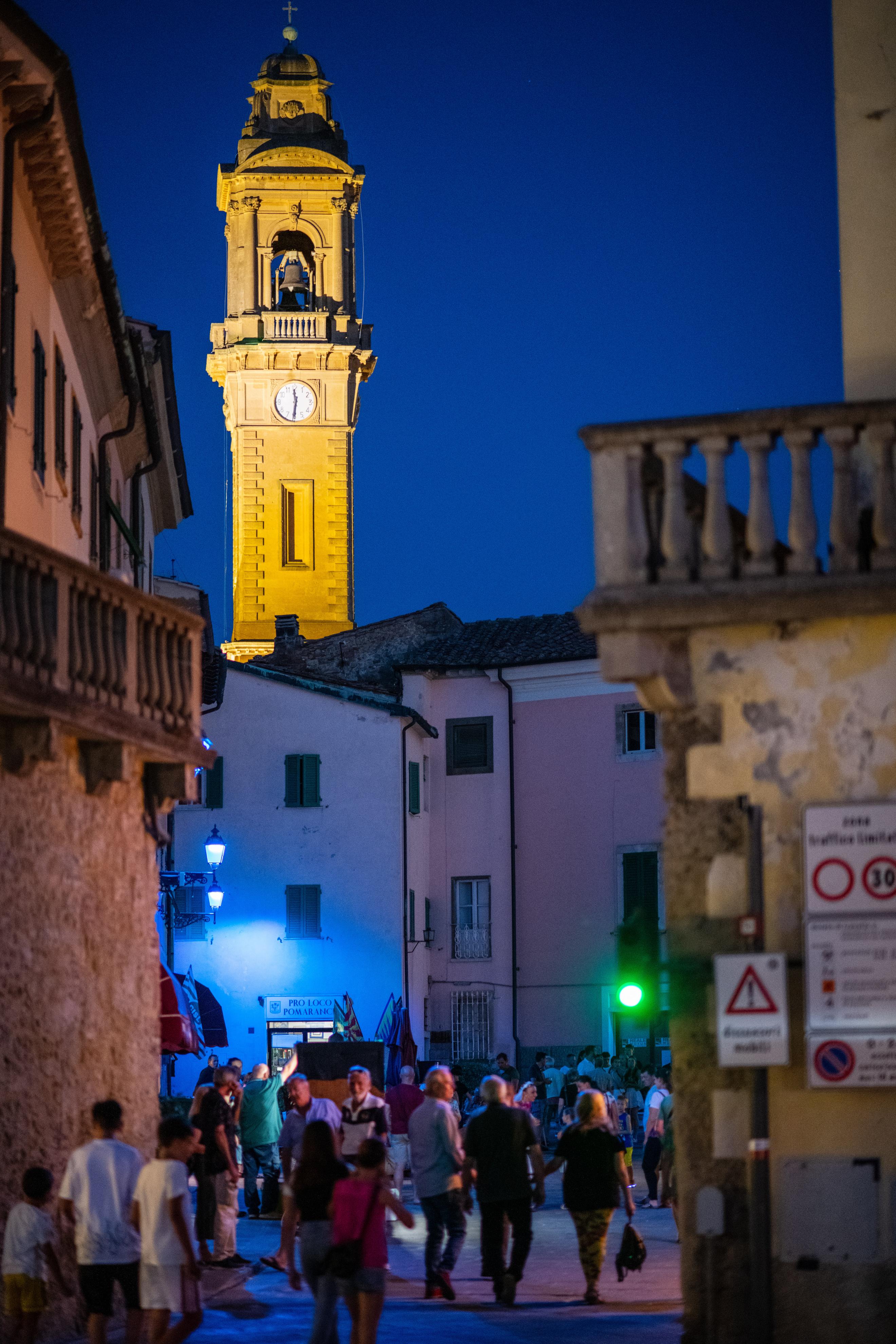
The Torre Pendente (Leaning Tower of Pisa) is a popular tourist attraction. The tower, constructed in the 12th century, is an architectural feat and a global icon. It is possible to ascend the tower and take in spectacular views of the city and its environs.
Additionally, there are many cultural and historical landmarks to visit in the city, demonstrating the city’s long and distinguished history. The old town of Pisa is a wonderful place to take a stroll and take in the local culture thanks to its charming streets, colorful buildings, and picturesque squares. Artifacts from the ancient Roman and Etruscan civilizations can be found at the National Archaeological Museum, while the Palazzo Blu houses a collection of modern and contemporary art.
Pisa is also a great destination for those who love the outdoors. The surrounding region of Tuscany is known for its stunning landscapes, including rolling hills, vineyards, and olive groves. The city is also located just a short distance from the coast, and is a great base for exploring the beaches and coves of the Ligurian Sea. There are a variety of outdoor activities to enjoy, such as hiking, biking, and wine tasting.
Best things to do in Pisa
Pisa is a city that is packed with things to see and do, with a long and illustrious history, a thriving culture, and stunning natural scenery all around it. Pisa is a city that has something to offer everyone, whether they are interested in history, culture, or even outdoor adventures. Here are some of the best things to do in Pisa:
-
Visit the Torre Pendente, or leaning tower, which is one of the most iconic landmarks in the world. The tower, which was built in the 12th century, is an engineering marvel and offers breathtaking views of the city and the surrounding region.
-
Explore the historic center of Pisa, which is filled with charming streets, colorful buildings, and picturesque squares. Stroll through the city and soak up the local atmosphere, and be sure to visit some of the city’s main landmarks, such as the Piazza dei Cavalieri, the Palazzo della Carovana, and the Baptistery of St. John.
-
Visit the National Archaeological Museum, which houses a collection of artifacts from the ancient Roman and Etruscan civilizations. The museum is home to a variety of ancient statues, coins, and jewelry and is a great place to learn about the city’s rich history.
-
Take a trip to the coast and explore the beaches and coves of the Ligurian Sea. Pisa is located just a short distance from the coast, and there are a variety of beaches to choose from, ranging from quiet coves to bustling beach resorts.
-
Go wine-tasting in the surrounding region of Tuscany. The region is known for its excellent wines, and there are a number of wineries and vineyards in the area that offer tastings and tours.
-
Visit the Palazzo Blu, which is home to a collection of modern and contemporary art. The museum features a variety of works by artists from around the world and is a great place to see some of the latest trends in the art world.
-
Visit the Pisa Cathedral, which is a beautiful example of Romanesque architecture. The cathedral, which is located in the heart of the city, is home to a number of artistic treasures, including a beautiful pulpit by Giovanni Pisano.
-
Explore the city’s art scene. Pisa is home to a number of galleries and artist studios, and there are often exhibitions and events taking place throughout the year.
-
Take a walk along the Arno River, which runs through the city and offers beautiful views of the surrounding region. The river is also home to a number of parks and green spaces, which are perfect for a leisurely stroll or picnic.
-
Visit the Orto Botanico, or botanical garden, which is home to a variety of plants and flowers from around the world. The garden is a great place to relax and enjoy some peace and quiet in the heart of the city.
-
Visit the Giardino Scotto, a beautiful park located in the center of the city. The park is home to a number of sculptures and artwork, and is a great place to relax and enjoy the outdoors.
-
Go shopping in the city’s many markets and stores. Pisa is home to a variety of shopping districts, including the Via San Martino and the Borgo Stretto, which are filled with boutiques, artisan shops, and traditional markets.
-
Try some of the city’s delicious Tuscan cuisine. Pisa is known for its traditional dishes such as ribollita and bistecca alla fiorentina, as well as a variety of world-class restaurants and cafes.
-
Attend one of the city’s many festivals or events. Pisa is home to a variety of festivals and events throughout the year, including the Gioco del Ponte, the Festival della Scienza, and the Festa della Repubblica.
What is the best month to travel to Pisa?
Because of its Mediterranean climate, which features mild winters and hot summers, the city of Pisa is a destination that can be enjoyed at any time of the year. In light of the aforementioned, the ideal time to go to Pisa is one of the months that you choose, bearing in mind your individual preferences and objectives for the vacation. When deciding which month is ideal for a trip to Pisa, there are a few things to keep in mind, such as the following:
The months of June through August in Pisa offer the warmest temperatures and the most sunshine, making these months the ideal time to go there if you want to take advantage of the beach and other warm-weather activities. Be prepared for larger crowds and higher prices as this is the busiest and most expensive time of the year to visit the location in question.
The months of April to May and September to October, both in the spring and fall, are wonderful times to visit because the weather is more pleasant and there are fewer people there. The temperatures are mild and there are fewer tourists in the city, and the city is at its most colorful as the trees and flowers start to bloom or change color. The weather is still quite pleasant.
Between the months of November and March is an excellent time to visit Pisa if you would like to take part in the city’s winter season. The temperature and precipitation are lower, but the city is much less busy and there are fewer tourists because of the weather. In addition, this is an excellent time to participate in Pisa’s holiday traditions, such as shopping at Christmas markets and attending New Year’s Eve parties.
Overall, the best month to visit Pisa is one that best suits your preferences. However, April is a good choice. The city is worth a trip at any time of year because it always has something interesting to offer its guests.
Getting around Pisa
Walking around Pisa is one of the most enjoyable ways to see the city. There are a number of charming streets, squares, and parks that can be explored, and the central business district of the city is compact and simple to navigate. Walking around a city is a great way to get a sense of the local culture there, and it’s also a good way to find hidden treasures and off-the-beaten-path destinations.
Pisa is a fantastic city to explore on two wheels, so bring your bike if that’s how you prefer to travel. The city is home to a number of bike lanes and paths, and there are a number of businesses in the area that rent bicycles on an hourly, daily, or weekly basis. The best way to get around the city, stay active, and see the sights at your own pace is on two wheels. Biking is an excellent mode of transportation.
In addition, Pisa possesses a dependable public transportation system that can be accessed via trams and buses. The bus system in the city encompasses the majority of the city, and there are multiple tram lines that connect the downtown area with the surrounding suburbs. Tickets can be purchased at vending machines, tobacco shops, and newsstands, and they are good for all forms of public transportation.
Last but not least, if the expediency of a taxi is more your speed, Pisa is equipped with a good number of taxi stands spread out across the city. Taxis can also be summoned from the street, and this mode of transportation is recommended for longer trips or for people who struggle with mobility.
How long should I stay in Pisa?
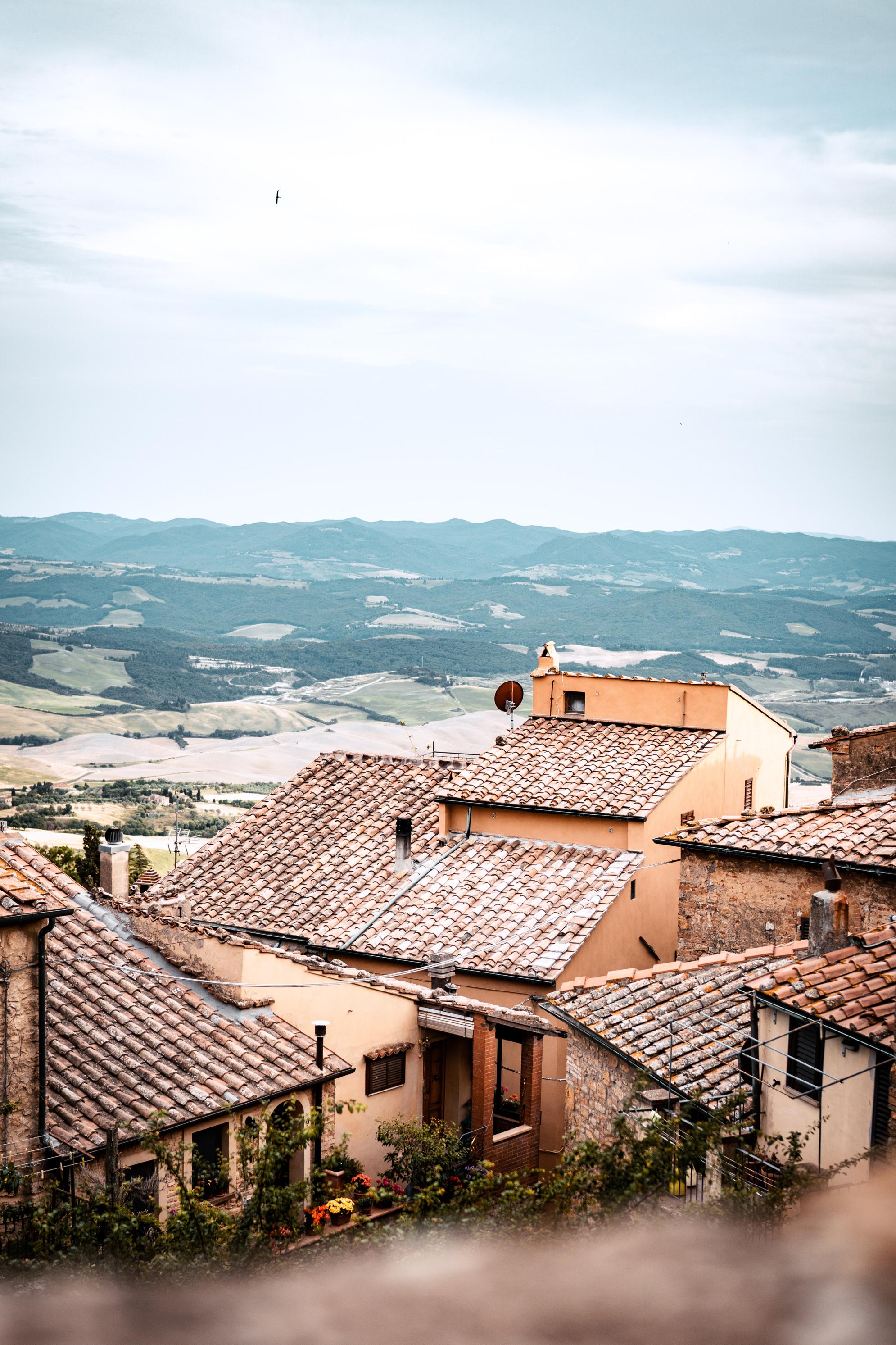
The city of Pisa has much to offer, from its fascinating history to its thriving culture to its breathtakingly beautiful surroundings. Pisa caters to visitors interested in all things historical, cultural, and adventurous. Is there a recommended length of time to spend in Pisa?
This question can only be answered after considering your goals for the trip and the amount of time you have. You can probably get a good sense of the city in just a couple of days if you are just passing through and want to see the main sights like the leaning tower and the historic center. If, on the other hand, you intend to take your time and get to know the city thoroughly, a longer stay may be in order.
Spending more time in Pisa allows you to take in the city’s historic sites and cultural attractions at your own pace, which is just one of the many advantages of a longer visit. You’ll have plenty of time to take in the city’s cultural institutions, wander the cobblestone streets of the historic district, and sample the delectable fare of the neighborhood’s restaurants. You’ll be close enough to the region that day trips to the coast or Tuscany’s neighboring regions will give you a taste of the region’s breathtaking scenery.
The longer you stay in Pisa, the more you can experience the city’s culture and its many attractions. You’ll be able to strike up conversations with natives, who can fill you in on the city’s history and culture. You’ll get a much more authentic experience of the city if you choose to stay in a residential area or an apartment rather than a hotel in the heart of it.
What to eat in Pisa?
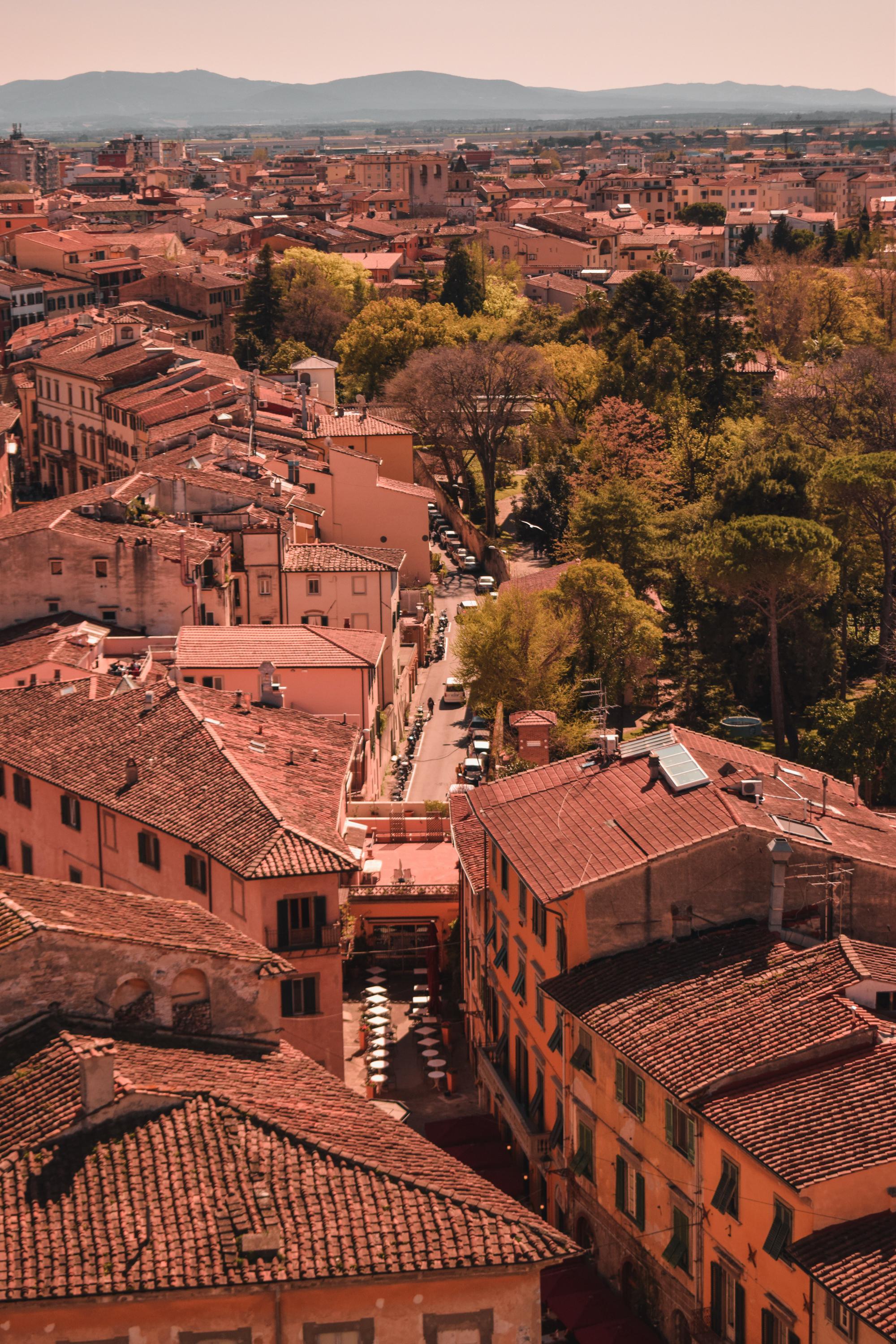
Pisa is a stunning city in Italy that offers visitors a wide variety of delectable dishes to try. Pisa provides a diverse range of dining options, so it doesn’t matter if you’re looking for classic Italian dishes or something fresh and exciting to try; you’ll find it all here.
From fresh seafood and homemade pasta to thin-crust pizzas and gelato, there is something for everyone to enjoy. To get the most out of your trip to Pisa, it is important to know what to eat and where to find it. From traditional restaurants to street food vendors, here is what to know about Pisa’s culinary scene.
Here are some of the best dishes to try while you’re in Pisa:
-
Bistecca alla fiorentina: This is a classic Tuscan dish made with a thick, juicy steak that is grilled over an open flame. The steak is served rare and is typically accompanied by a salad or roasted vegetables.
-
Ribollita: This is a hearty Tuscan soup made with beans, vegetables, and leftover bread. It is a filling and flavorful dish that is perfect for a cold winter day.
-
Focaccia di Recco: This is a type of flatbread that is native to the Liguria region, which is located just a short distance from Pisa. The bread is filled with creamy stracchino cheese and is baked until it is crispy and golden brown.
-
Pappa al pomodoro: This is a rustic tomato soup that is made with fresh tomatoes, bread, and olive oil. It is a simple but delicious dish that is often served as a starter or a light meal.
-
Gelato: No trip to Italy is complete without trying some gelato, and Pisa is home to a number of excellent gelaterias. Be sure to try some of the local flavors, such as hazelnut and pistachio, as well as some of the more unusual flavors like lemon and lavender.
Where to stay in Pisa?
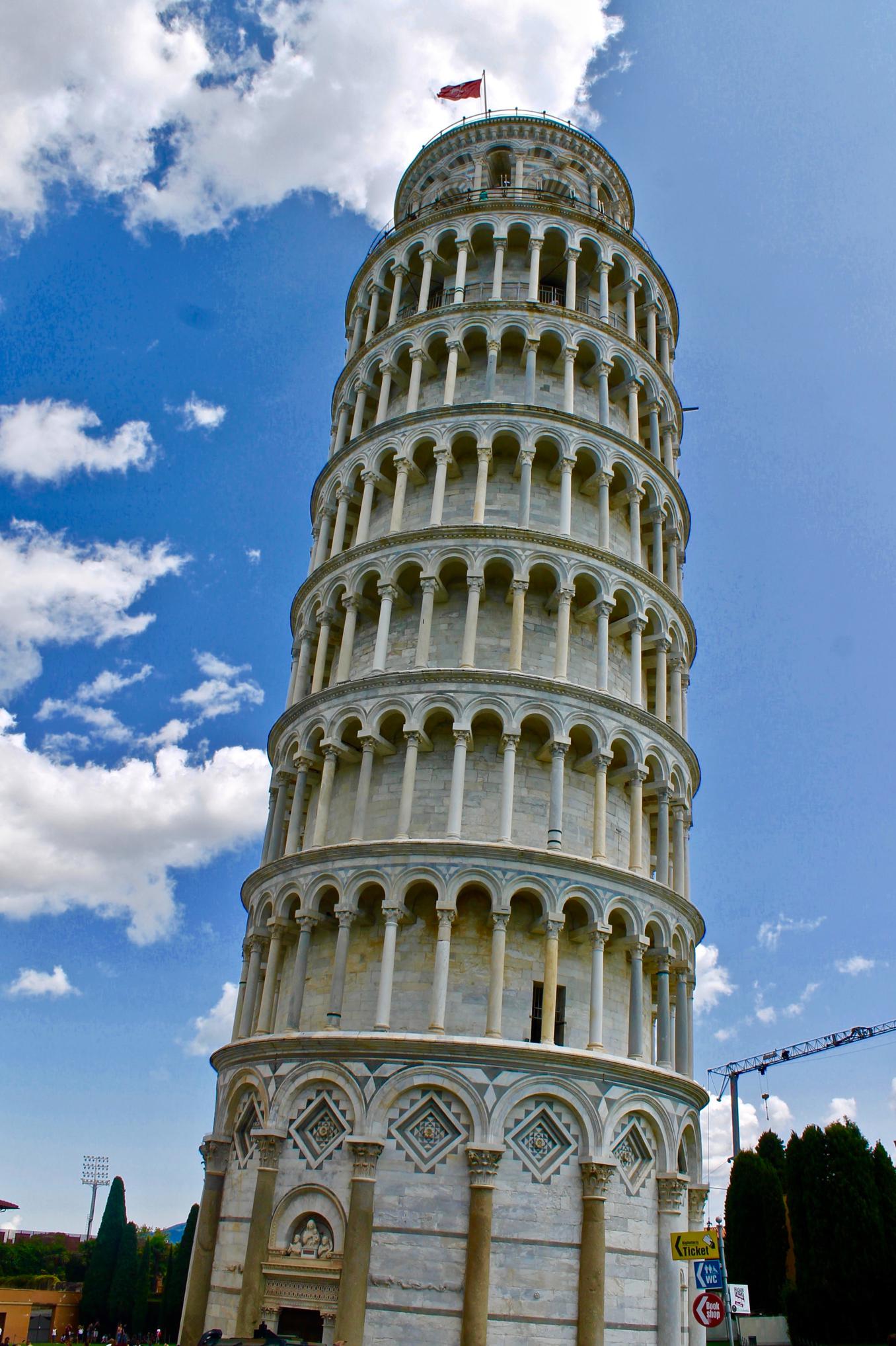
Need a great place to stay in Pisa? If that’s the case, it’s in your best interest to learn as much as possible about the city and the various places to stay there. Pisa has a wide variety of lodging options, from cheap dorms to five-star hotels.
You can find a great hotel in a convenient location, such as near the famous Leaning Tower, or in a quieter area if that’s what you prefer. Pisa is an excellent vacation spot for people of all tastes and interests thanks to its fascinating history, fascinating art, and breathtaking scenery.
Here is some information about Pisa’s hotels that you may find useful before making your reservation.
Is Pisa safe for female travelers?
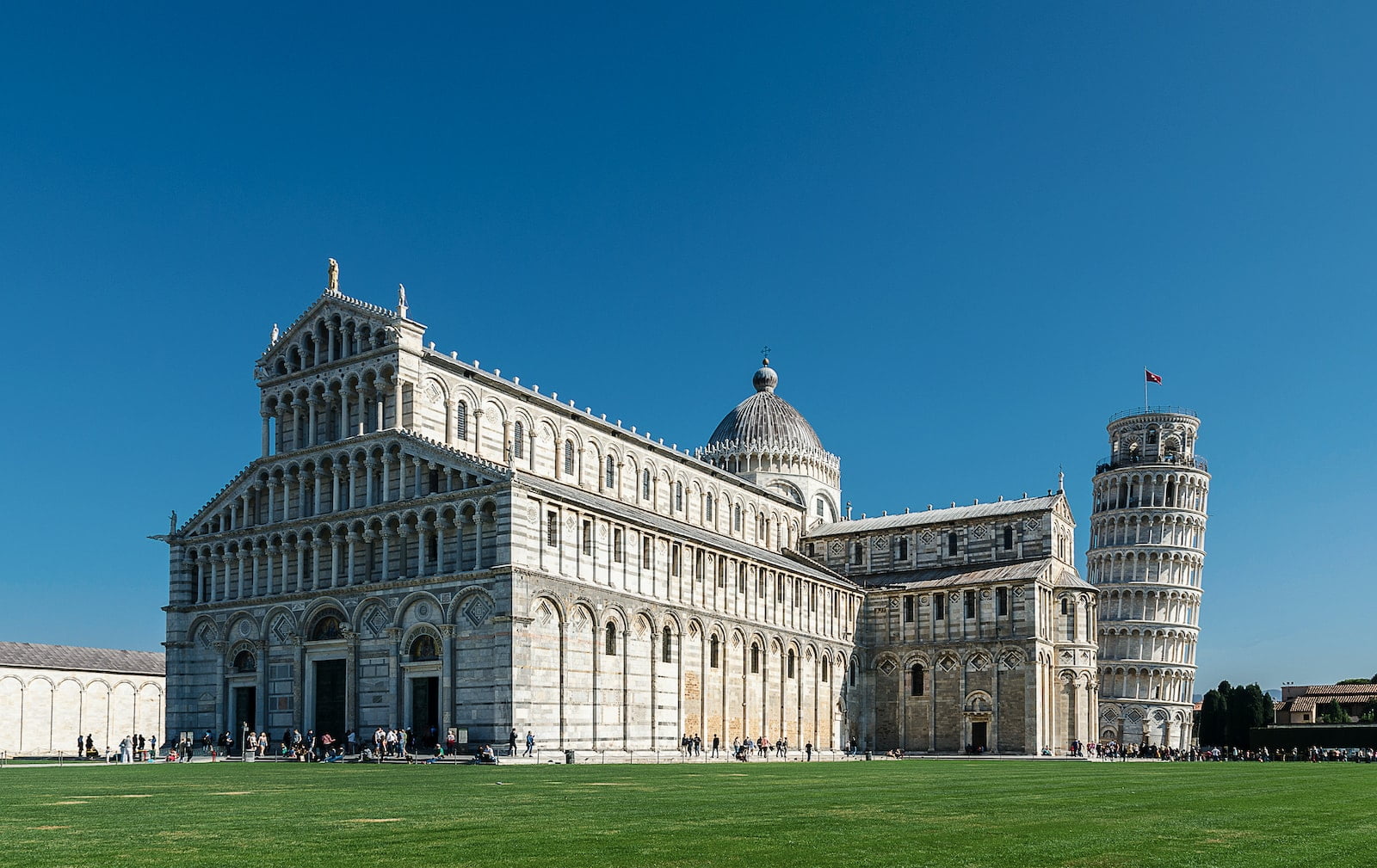
Visiting Pisa as a solo woman or with a small group of other women is not only possible, but encouraged. Though it’s wise to exercise normal precautions when traveling anywhere, Pisa is a particularly warm and friendly place to spend time.
Pisa has a low crime rate and a strong sense of community, both of which are positive aspects for female visitors. The city’s main thoroughfare is well-lit and patrolled by police officers, so residents need not worry about their safety. In addition, the locals are warm and helpful, always ready to point out landmarks or provide advice to tourists.
Hotels, B&Bs, and short-term rentals are just some of the lodging options available to visitors in Pisa. Most of these places to stay have secure, well-lit entrances and 24-hour reception, and many of them can be found in the heart of the city or in relatively safe neighborhoods.
The city of Pisa provides a variety of public transportation options, such as buses, trams, and taxis, for its residents and visitors. Public transportation in the city is dependable and safe, and there are numerous taxi stands to choose from. Pisa is a small, simple city to get around on your own, and it is perfectly safe to do so both during the day and at night.
Is Pisa expensive to visit?
The city of Pisa offers visitors a wide variety of lodging, dining, and entertainment options, making it accessible to those on a tighter budget. Although a trip to Italy can be costly, there are many ways to cut costs in Pisa.
Picking the right place to stay can be a great way to cut costs in Pisa. There are a lot of high-end hotels in the city, but there are also plenty of cheaper options like B&Bs, guesthouses, and rental houses. These alternatives can provide a more genuine and inexpensive local experience than hotels.
To satisfy one’s appetite, visitors to Pisa can choose from a variety of fast food joints, casual eateries, and fine dining venues. Try some of the local trattorias or markets for tasty, inexpensive Italian fare. Picking local and in-season ingredients can help you save money as they are typically less expensive than their imported and out-of-season counterparts.
Picking and choosing which sights to see can help you save money while in Pisa. While the leaning tower and the Duomo do charge admission, there are many free or cheap things to do in the city, such as strolling through the parks or gardens or along the Arno River.
Finally, consider purchasing a city pass, which can save you money on admission fees and public transportation. Pisa has a number of city passes available, including the PisaCard, which offers discounts on admission fees and free use of the city’s public transportation system.
FAQs
What is special about Pisa?
The tower, which began to lean during the 12th century, is a symbol of the city and a major tourist attraction. Other notable landmarks in Pisa include the Piazza dei Miracoli (Square of Miracles), the Duomo di Pisa, and the Baptistery. Pisa is also home to the University of Pisa, one of the oldest universities in Europe.
How many hours in Pisa is enough?
However, it is suggested that spending at least one full day in Pisa is necessary to experience the main sights and attractions.
Bottom Line
The Leaning Tower of Pisa is one of Italy’s most iconic sites and a must-see for anyone visiting the country. It is an incredible feat of engineering, and a site steeped in history and legend. With its unique tilt and beautiful architecture, the Leaning Tower of Pisa is a testament to the skill and innovation of the people of the Middle Ages.
Visitors to Pisa can explore the tower and the surrounding attractions, and learn about its fascinating history. Whether it’s for a day trip or a longer holiday, a visit to the Leaning Tower of Pisa is sure to be a memorable experience.

